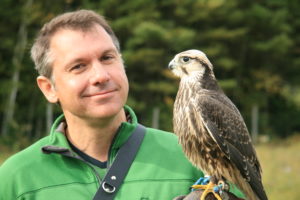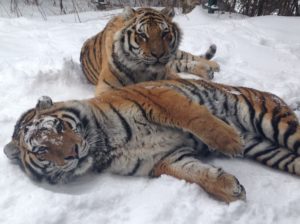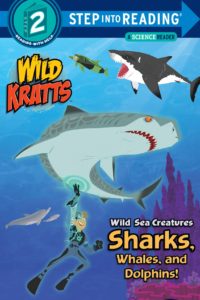
Chris Kratt with a Lanner Falcon
For all you who skipped over my Prologue in Book One (and you know who you are), here’s the scenario that sets the stage for the Sunset Rising series: World War Three begins with (supposedly) North Korea being the first to launch nuclear warheads, which in turn unleashes a geopolitical chain reaction. Within the space of forty-eight hours more than half of the worlds known nuclear weapon stockpile is detonated, sending the earth into a nuclear winter that lasts approximately two years. About five hundred people escape into a hermetically sealed Biodome, preserving humanity and their technology until they can one day leave their manmade environment. The first chapter of Book One begins almost three hundred years after WWIII.
Now the fun part of being a writer begins: world building. Using two parts research and four parts imagination, I’m creating a post-apocalyptic world for the Sunset Rising series (spoiler alert: this involves Book #3). It’s difficult to explain the process my imagination goes through (I need to show, not tell!), but I can share with you some of my research sources. And when creating a post-nuclear creature world, who better to ask than one of the Kratt Brothers?
Chris Kratt is a producer/writer, biologist, educator and host of several popular educational television series about animals and nature, and is best known for his current hit, Wild Kratts and my personal favorite, Zaboomafoo. I reached out to Chris for his advice and he has been a tremendous—not to mention totally awesome and fun!—resource in helping me think critically about what creatures might survive a nuclear winter to one day live free and in the wild once again ☺
Susan: Hey Chris! First, I want to thank you for brainstorming with me about a post-apocalyptic creature world. The animal world is much more complex than I originally thought, and trying to figure out which animals might survive is harder than one might think! So to start off the interview, my first question is what kind of animals do you think could survive an approximate two-year nuclear winter?
Chris: Hopefully, we won’t ever have to find out! But I’d say there are probably two main things to consider: 1. Who can survive the change in climate; and 2. Who would still be able to find food.
First, the food. If all the plants died off because there was no sunlight, herbivores (plant eaters) like deer, rabbits, and elephants would not be able to survive. That’d leave the carnivores (meat eaters) and omnivores (meat and plant eaters) that could probably last for a while on dead herbivores and other animals that were still trying to survive.
Second, the climate change. Since it’d be much colder for extended periods of time, that would favor those carnivores that are very well adapted to cold. For example, animals with thick coats of fur, animals with the ability to migrate, and maybe hibernators.
Susan: With that in mind, and thinking about our own creature world here in North America (where Sunset Rising takes place), what kind of animals do you think would survive?
Chris: Hmmm… For mammals, there are some generalist predators that might do pretty well. Coyotes and Cougars have ranges that extend from deserts/rainforests all the way into cold temperate and mountain forest. So they have what it takes to deal with cold weather and they’re mobile. They could move around to the climate that is favorable for them. Similarly bears and wolverines are adapted to cold and are mobile. And, of course, rodents are survivors—many can find warmth in cold climates and will eat different things, including carrion.
And, believe it or not, don’t necessarily count all insects out. Some have freeze tolerance adaptations and may be able to stay frozen through the extended winter-like conditions. Others, like certain flies and cockroaches are good at finding whatever heat sources are available and will eat whatever meat they can find. And if they were able to survive, they would provide food for some of the smaller animals trying to make it through a nuclear winter.
Birds would be interesting because so many of them are able to migrate. Some might be able to find a climate they can survive in and would be happy to eat whatever meat is around. Crows, Ravens, Jays, Vultures and other raptors would probably be some top meat-eating and hearty contenders.
Susan: The ability to migrate is a really good point! It makes me think about creatures that might be stuck, especially animals in a zoo who are already out of their indigenous ecosystem.
Chris: That’s a complicated question. Provided they can get out of the zoo enclosures, some exotic predators might have a chance. There may be some situations where the animal actually finds itself in a better climate! For example, if a cold-weather predator is kept in a zoo south of it’s preferred habitat and that area becomes colder, it may actually prefer the new temperature. A polar bear in a New York zoo could definitely deal with the weather if New York got a lot colder.
Exotic animals in zoos on different continents might be able to survive too. A snow leopard or Siberian tiger in a warm climate zoo could potentially find itself in a cold weather climate that it is better suited for.
Susan: So cats capable of withstanding cold temperatures would have a good chance of surviving a nuclear winter?
I think some probably would. Of course, cats are meat-eaters so they could potentially cope with the loss of plants as long as there was enough meat around. And there are certainly cats that are more comfortable in cold weather—like lynx, snow leopards, Siberian tigers, and cougars.

Rulers of a nuclear winter? (Photo taken by Chris Kratt, used with permission).
But there are lots of other factors that would come into play. For example, lynx are great at dealing with the cold, but they are wired as extreme specialist snowshoe hare eaters. When hare populations crash, so do lynx populations. So if snowshoe hares weren’t around the question is would lynx ultimately be able to make the switch to hunting other food and even carrion if they had to? That’s hard to predict.
Lions might be able to eke out a living somewhere, but they’re really not cold weather cats and, in an event like a nuclear winter, they would not be able to evolve cold-weather adaptations quickly enough. So it would all depend on how cold it actually got.
Susan: Wow. A lot of thought really needs to go into imagining a post-apocalyptic animal kingdom. I’ll just say right up front that I’m not even going to try to match wits with Mother Nature when I create my creature world…hence, the four parts imagination I mentioned earlier! Thank you so much, Chris, for all your help!
Chris: Thanks Susan. It’s interesting to think about the different survival abilities of animals, but I sure hope we never end up finding out the answers to some of these questions!
About Chris Kratt:
Chris is a producer/writer, biologist, educator and host of several popular educational television series about animals and nature. He has co-created and produced over 225 episodes of television broadcast around the world, including Kratts’ Creatures, Zoboomafoo, National Geographic’s “Be the Creature”, and current hit, Wild Kratts (which airs on PBS Kids and TVOKids). His series’ have received numerous awards including Parent’s Choice Gold, Emmy Award, and Gemini Award.
Chris and Martin have recently released their first book in a Wild Kratts educational reading series for children. It’s an awesome adventure about creatures living free and in the ocean! Click below and check it out for yourself:

Your books look amazing, I look forward to reading them
Sounds very interesting
A very interesting story! 🙂
After reading this I have found myself looking up what animals could survive a changing world.
I have tagged you in the Book Cake Tag: http://mooneyesrandomsmile.blogspot.ca/2014/10/book-cake-tag.html
Just stopped by the say hello!
Dropped in to say Hi….interesting interview!
Stopping in to say hi 🙂
Just finished the trilogy and loved it! Found the interview very interesting, but was hoping it would go a little more in depth. I guess I will have to do my own research. Looking forward to future books.
Thank you so much for stopping by and sharing that with me, Maria! And I’m glad you found my interview with Chris interesting 🙂 We spent a couple of hours theorizing which North American animals would be best suited to survive a nuclear winter. Tigers were a clear winner for a couple of reasons: 1. There are more tigers in captivity in North American than there are living in the wild globally, so there is a sizeable population to begin with; 2. Tigers can adjust to any climate, be it hot (like India) or cold (like Siberia); and 3. All cats are obligate carnivores, and there would be plenty of meat for them to scavenge as the food chain broke down. Of course, now that I’m living on the west coast I see another cat that would weather a nuclear winter: Cougars! There are tons of them here.
If you do your own research, I’d love for you to come back and share it with me!